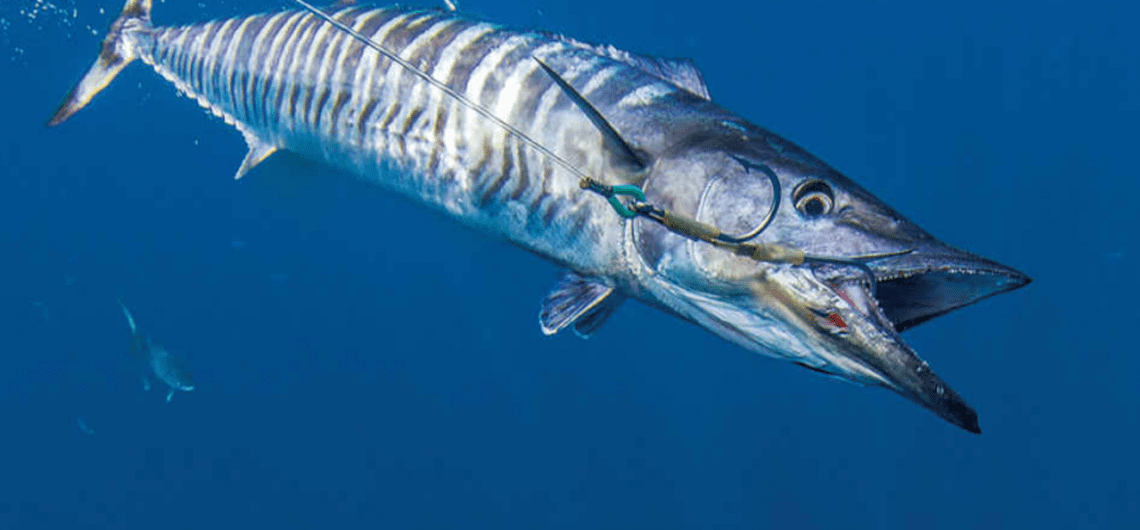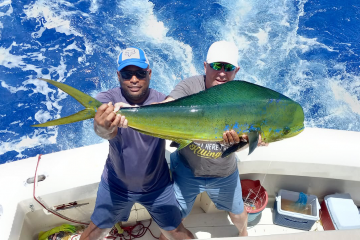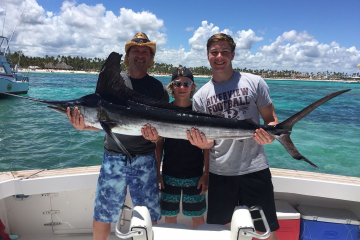Wahoo
Wahoo (Acanthocybium solandri) is a scombrid fish found worldwide in tropical and subtropical seas. It is best known to sports fishermen, as its speed and high-quality flesh makes it a prized game fish.
The flesh of the wahoo is white to grey, delicate to dense, and highly regarded by many cuisines. The taste has been said to be similar to mackerel. This has created some demand for the wahoo as a premium-priced commercial food fish. In many areas of its range, such as Hawaii, Bermuda, and many parts of the Caribbean, local demand for wahoo is met by artisanal commercial fishermen who take them primarily by trolling. Recreational sports fishermen also sell their catch. Wahoo, which is popularly called Hoo in the US, are successfully fished with live bait around deep-water oil and gas platforms in the Gulf during the winter months.
Description
Its body is elongated and covered with small, scarcely visible scales; the back is an iridescent blue, while the sides are silvery with a pattern of irregular vertical blue bars. These colors fade rapidly during death. The mouth is large, and the teeth of the wahoo are razor sharp. Both the upper and lower jaws have a somewhat sharper appearance than those of king or Spanish mackerel.
Specimens have been recorded at up to 2.5 m (8 ft 2 in) in length, and weighing up to 83 kg (183 lb). Growth can be rapid. Wahoo can swim up to 60 mph (96.5606 km/h). They are some of the fastest fish in the sea.
The wahoo may be distinguished from the related Atlantic king mackerel and from the Indo-Pacific narrow-barred Spanish mackerel by a fold of skin which covers the mandible when its mouth is closed. In contrast, the mandible of the king mackerel is always visible as it is also the case for the smaller Spanish mackerel and Cero mackerel. The teeth of the wahoo are similar to those of king mackerel, but shorter and more closely set together.
The barracuda is sometimes confused with the mackerel and wahoo, but it is easy to distinguish from the latter two species. Barracuda have prominent scales, larger, dagger-like teeth, and lack the caudal keels and blade-like (forked) tail characteristic of the scombrids.






Comments